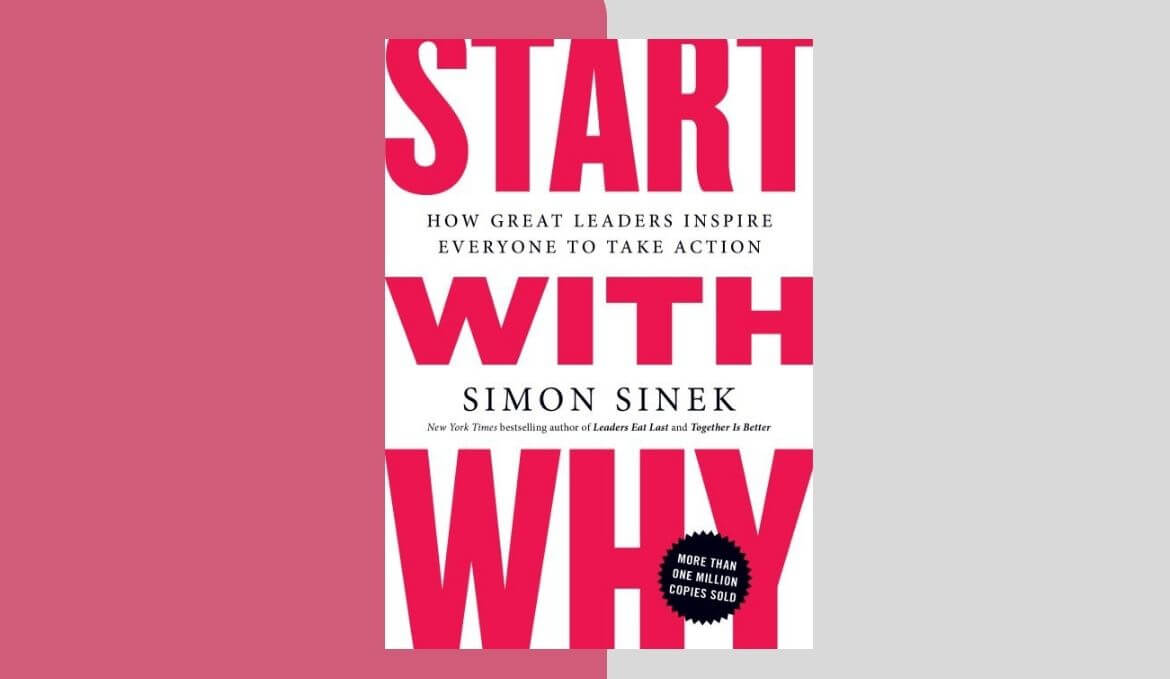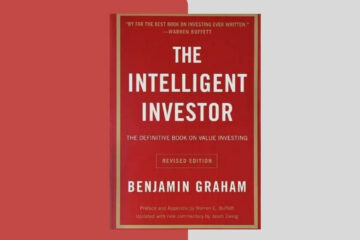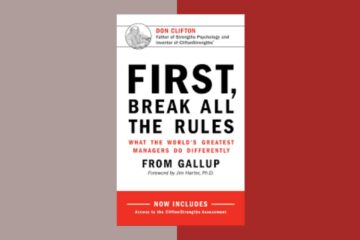In his book “Start with Why,” Simon Sinek describes how effective leaders and organisations have utilised this tactic to motivate others and achieve great success. He presents the concept of starting with why. Sinek asserts that the most successful companies and leaders emphasise the “why” rather than the “what” or “how” of their efforts.
The core of the strategy of starting with the why is the notion that individuals are driven by both what they do and why they do it. By starting with the why, leaders and companies may inspire their partners, clients, and employees to collaborate around a shared goal by tapping into their deepest motivations.
The “I have a dream” speech by Martin Luther King Jr. is widely highlighted as a potent illustration of the effectiveness of beginning with why. One of the most well-known instances of a leader who began with why is this speech. Instead than merely outlining his vision for civil rights, King began by explaining why he believed that all people are equal and should be treated with respect and decency. That inspired his audience to take action and support his cause because of this.
Richard Branson, Apple, and Southwest Airlines are more instances of businesspeople and leaders who have successfully launched their ventures for a reason. Steve Jobs said that Apple’s purpose was to challenge the status quo and make beautiful, user-friendly, and empowering products. The goal of Southwest was to make air travel more accessible to all people and democratize it. Additionally, Branson’s motivation is to establish businesses that have a positive global impact.
In addition to providing customers and employees with cutting-edge products and services, these businesses and their leaders have achieved success by inspiring them with a greater sense of purpose.
So, in your own life or business, how can you begin with the why? Sinek suggests that the first step is to determine your own why, which he refers to as your deeper purpose or conviction that guides your actions. Whenever you have distinguished your why, you can utilize it to direct your choices and activities, and to rouse others to go along with you in your central goal.
The principle of beginning with the why is a potent one that has the potential to assist both individuals and organizations in achieving greater success and contentment. By zeroing in on the why behind what they do, pioneers and associations can take advantage of the more profound inspirations of their representatives, clients, and accomplices, and motivate them to cooperate towards a shared objective. Starting with the why can help you achieve your objectives and make a lasting impact, whether you are a CEO, an entrepreneur, or just someone who wants to make a difference in the world.
A World That Doesn’t Start with Why
Many leaders and organisations focus primarily on the “what” and “how” of their operations today, sometimes neglecting the more fundamental motives at work. Simon Sinek contends in his book “Start with Why” that this approach may have limited success and demotivate both customers and staff.
The “what” and “how” of an organization’s operations refer to the tangible products or services it offers along with the methods it uses to provide them. Although these factors are definitely important, they only give a cursory knowledge of an organization’s objectives and guiding principles.
On the other hand, considering the fundamental motives and beliefs that underlie an organization’s actions is known as “starting with why.” Employees and customers alike may become more committed and loyal as a result of this strategy, which is more rooted in values and purpose.
Sinek argues that many leaders and organizations have failed to recognize the significance of beginning with the why and have instead concentrated solely on the “what” and “how.” This can prompt an absence of bearing and reason, and cause it hard for representatives to feel genuinely put resources into their work.
A focus on “what” or “how” can also result in a lack of differentiation among rivals. On the off chance that an association just spotlights on what they deal or how they offer it, they might battle to hang out in a jam-packed market. However, if an organization begins with the why, it can differentiate itself based on its distinctive purpose and values and cultivate a customer base that is more devoted.
Sinek also says that taking a “what” or “how”-focused approach can also make short-term results more important than long-term impact. An organization may prioritize short-term gains over long-term sustainability and impact if they are only concerned with what or how they produce it.
An Alternative Perspective
In his book “Start with Why”, Simon Sinek introduces the concept of the “Golden Circle,” a framework that helps leaders start with why and inspire others to action. The Golden Circle consists of three layers: Why, How, and What, each representing a different level of understanding about an organization or individual.
The Why layer is the innermost circle and represents the underlying purpose and beliefs that drive an organization or individual. This layer is focused on the question “why do we do what we do?” and is the most fundamental aspect of the Golden Circle.
The How layer is the middle circle and represents the processes and methods an organization or individual uses to achieve their purpose. This layer is focused on the question “how do we do what we do?” and is closely tied to the Why layer.
The What layer is the outermost circle and represents the tangible products or services an organization or individual offers. This layer is focused on the question “what do we do?” and is the most visible aspect of the Golden Circle.
According to Sinek, many organizations and leaders focus solely on the What layer, and fail to fully understand and communicate their underlying purpose and beliefs. By starting with why and working outwards towards the what, leaders can inspire others and build more loyal and dedicated teams.
Take, for instance, Apple, one of the most innovative and successful businesses of our time. Apple’s The reason is to rock the boat and think in an unexpected way. Designing products that are beautiful, straightforward, and simple to use is their How. And what they do is make smartphones, computers, and other consumer electronics.
By beginning with their Why, Apple can motivate clients and representatives who share their upsides of advancement and innovativeness. This motivates devotion and commitment, as clients feel like they are important for a bigger development, not simply purchasing items.
The Golden Circle framework can help leaders better understand and convey their own purpose and beliefs to others. Leaders can instill a sense of shared purpose and motivate others to join in their mission by beginning with the why.
In conclusion, leaders who want to start with the why and inspire others can benefit greatly from the Golden Circle framework. By getting it and imparting the basic reason and convictions that drive their association or individual activities, pioneers can fabricate more committed and faithful groups and make more prominent progress.
Leaders Need a Following
Starting with the why and clearly communicating their purpose and values is one of the most important ways for leaders to attract followers. At the point when supporters get it and put stock in a pioneer’s the reason, they are bound to feel put resources into the association’s prosperity and contribute their own endeavors towards making that progress.
However, more than just a clear sense of purpose, it is necessary to cultivate followers’ trust and loyalty. Through their actions and decisions, leaders must also demonstrate their dedication to that goal.
For instance, if a company’s mission is to create environmentally friendly products that are sustainable, but the company also engages in environmentally harmful activities, its customers are more likely to lose faith in the company and its leadership.
As a result, it is absolutely necessary for leaders to ensure that their decisions and actions are in line with their values and purpose, and that they place a higher priority on the outcomes that will have a positive impact over the short term.
By cultivating a culture of openness and accountability, leaders can also increase followers’ trust and loyalty. Followers are more likely to trust the leadership and remain committed to the organization’s goals when leaders are open and honest about their decisions and the reasons behind them. They also hold themselves and their teams accountable for their actions.
In the end, being a good leader requires more than just having a clear vision and purpose; it also requires gaining followers’ trust and loyalty. Leaders have the ability to cultivate a following that is dedicated, inspired, and committed to achieving their shared goals by beginning with the why, aligning actions with values, and cultivating a culture of transparency and accountability.
How to Rally Those Who Believe
Leading by example is one effective method for inspiring and motivating others. Followers are more likely to feel motivated to act in a manner that is consistent with the organization’s values and why it exists. For instance, assuming an association’s the reason is to advance civil rights, pioneers can show their obligation to this reason by taking part in fights or other support endeavors.
Another methodology is to enable adherents to contribute towards the association’s objectives. Followers are more likely to feel invested in the success of the organization when they believe that their contributions are valued and that they have a significant role to play in achieving its mission. This can be accomplished by providing opportunities for skill development and advancement as well as recognizing and appreciating individual team members’ contributions.
By providing opportunities for connection and collaboration, leaders can also help to cultivate a sense of community and shared purpose. Leaders can foster a sense of belonging and camaraderie within their teams by bringing members of the team together to discuss their thoughts and ideas.
At last, moving and spurring others requires a reasonable feeling of direction and a promise to adjusting activities to values. By showing others how its done, enabling supporters, and cultivating a feeling of local area and joint effort, pioneers can revitalize the people who accept and make more prominent progress.
It is essential for effective leadership to inspire and motivate others based on a shared sense of purpose and values. By showing others how its done, engaging devotees, and encouraging a feeling of local area and joint effort, pioneers can make a culture of common perspective and make more prominent progress towards their association’s objectives.
The Biggest Challenge is Success
The temptation to prioritize short-term gains over long-term impact is one of the biggest obstacles that arise when organizations achieve success. Organizations may make decisions that compromise their values or the well-being of their stakeholders in the pursuit of growth or profitability. This has the potential to undermine the organization’s long-term success and lead to a decline in followers’ trust and loyalty.
Even in the face of immediate pressures, leaders must remain committed to the values and why of their organization in order to overcome this obstacle. This necessitates a long-term perspective as well as the willingness to make difficult choices that put the organization’s mission ahead of short-term gains.
The risk of becoming complacent is another obstacle that arises when businesses achieve success. At the point when an association is accomplishing its objectives and encountering achievement, there might be an inclination to become agreeable and self-satisfied, as opposed to proceeding to take a stab at progress and development.
To conquer this test, pioneers should develop a culture of nonstop improvement and learning. Leaders can keep their organization’s sense of purpose and commitment fresh and alive by encouraging their teams to experiment with new ideas, take risks, and learn from mistakes.
Last but not least, it is essential for leaders to regularly communicate and reaffirm the values and purpose of the organization, particularly as it expands and changes. This can assist with keeping a feeling of direction and responsibility among colleagues and guarantee that everybody is pursuing similar shared objectives.
In conclusion, organizations face a significant challenge in maintaining a sense of purpose and commitment over time, particularly as they grow in success. To overcome this obstacle, leaders must regularly communicate and reinforce the organization’s why and values, cultivate a culture of continuous improvement and learning, and prioritize long-term impact over short-term gains. By doing this, organizations can keep the commitment and sense of purpose that will drive their success for years to come.
Conclusion
In conclusion, Simon Sinek’s book “Start with Why” offers valuable insights into the power of purpose, cause, and belief in achieving success. By starting with Why, individuals and companies can inspire others and create a loyal following. Sinek’s Golden Circle framework provides a simple yet powerful tool for understanding the importance of starting with Why. Through the examples of successful companies and individuals like Apple and Martin Luther King Jr., Sinek illustrates how starting with Why can transform the world.
Whether you’re a business person, a pioneer, or a singular looking to have an effect, “Begin with Why” offers pragmatic guidance for tracking down your Why and applying it to your life and business. You can inspire others, build meaningful relationships, and accomplish great things if you know what your cause, purpose, or belief is. So, start with your Why and learn how purpose can help your life and business.



